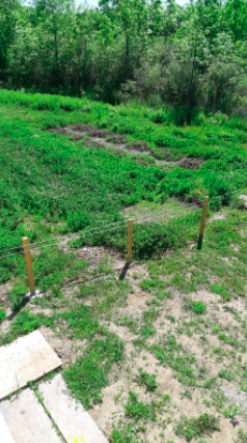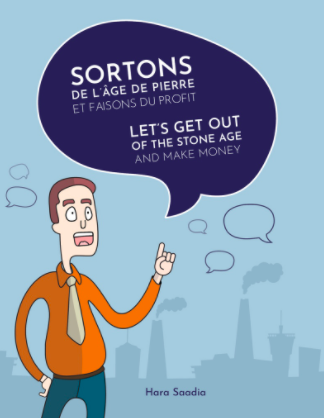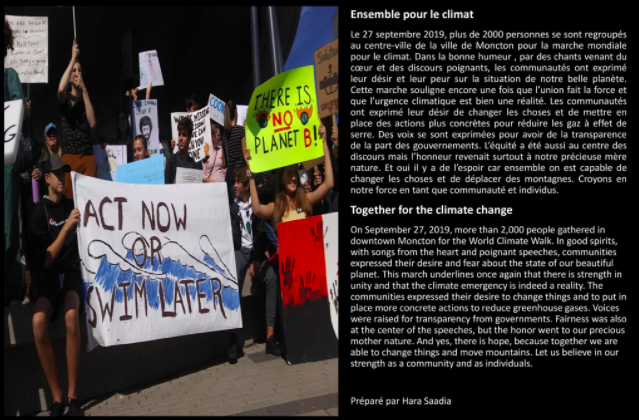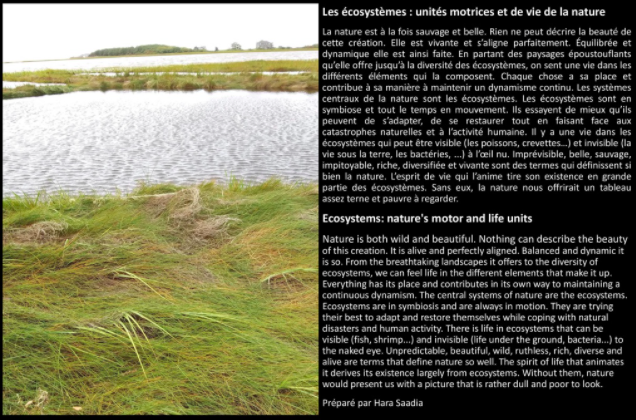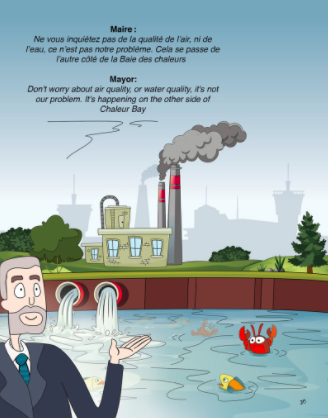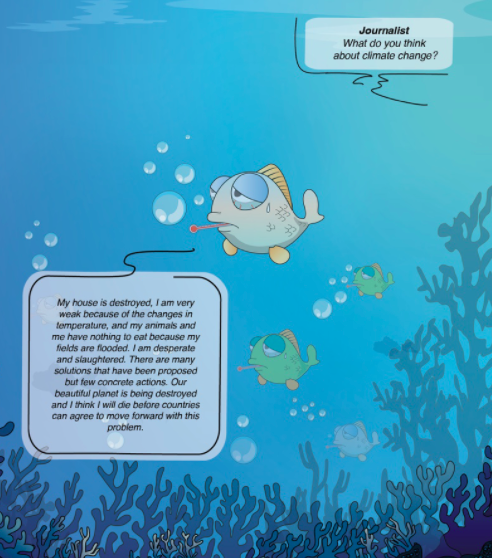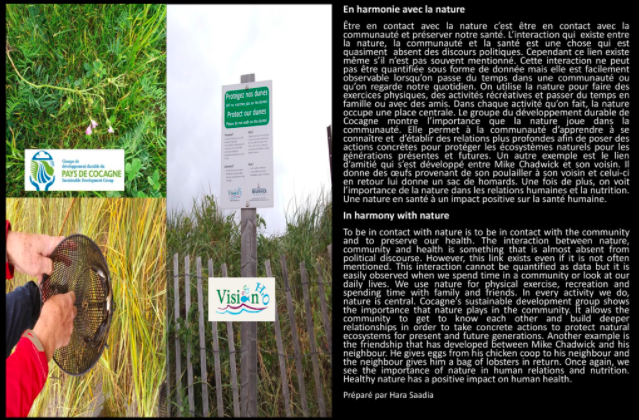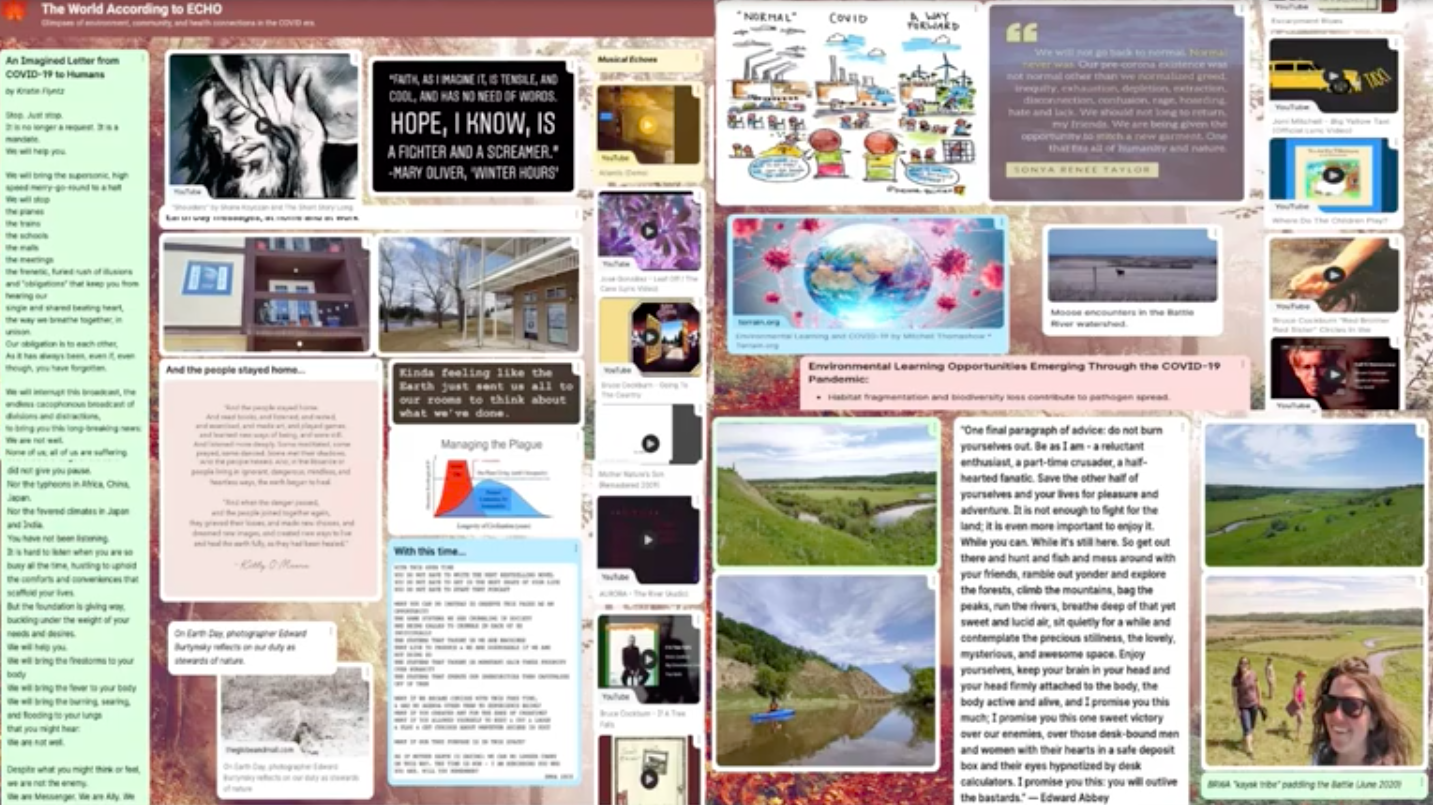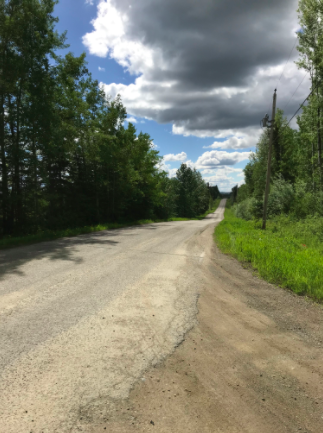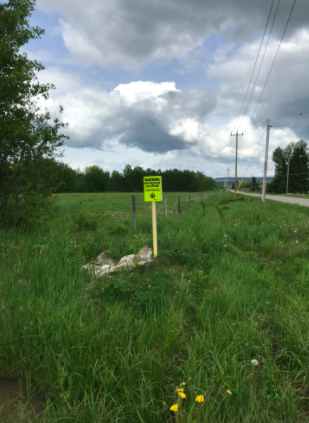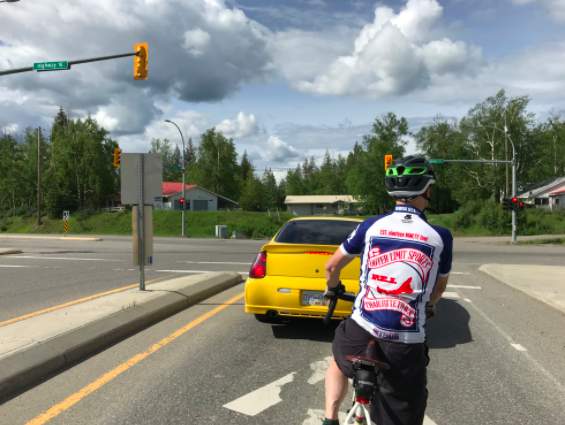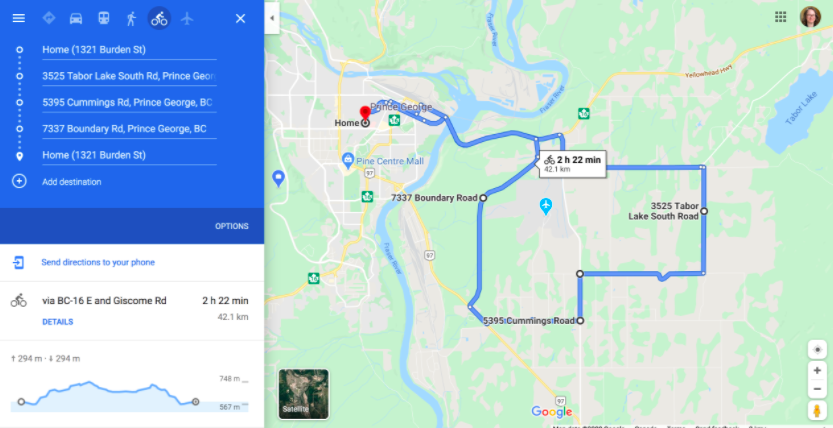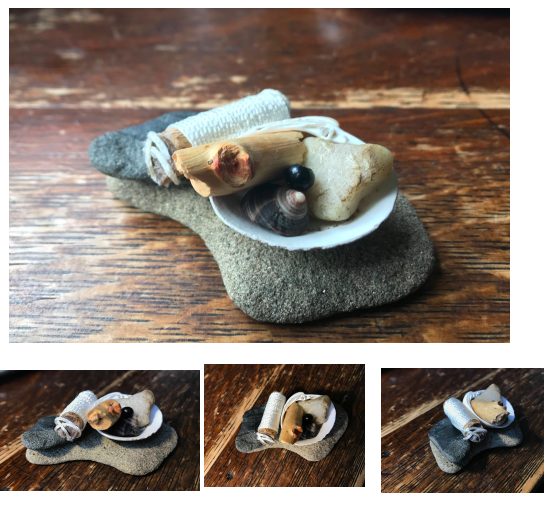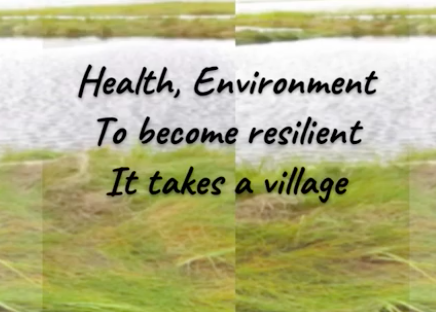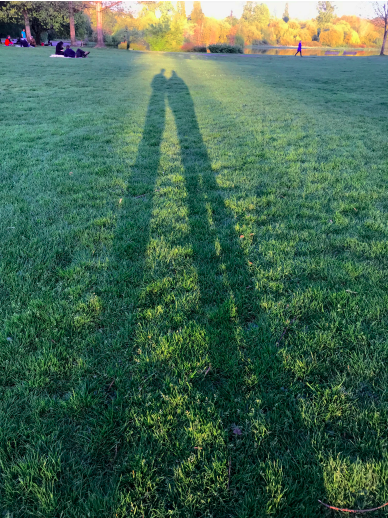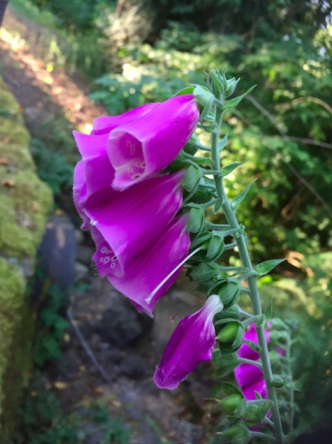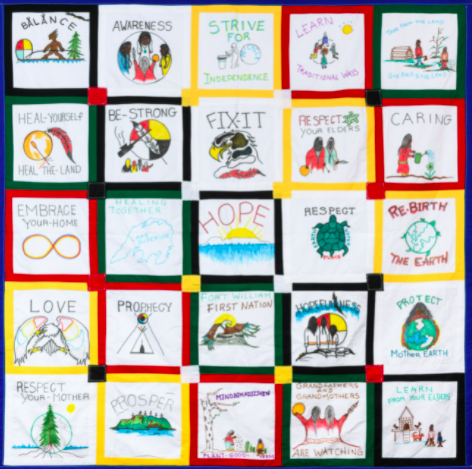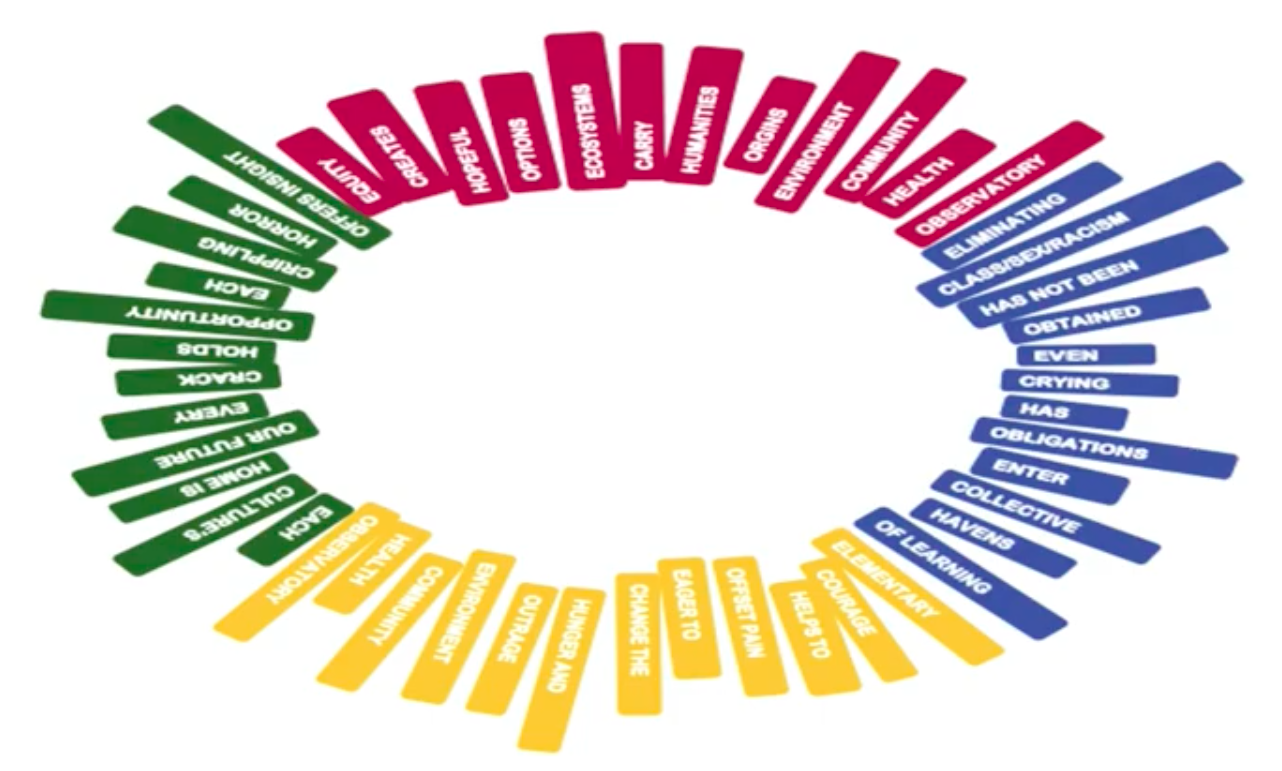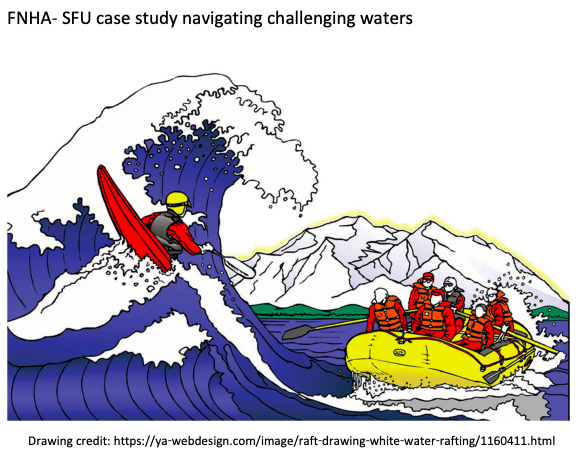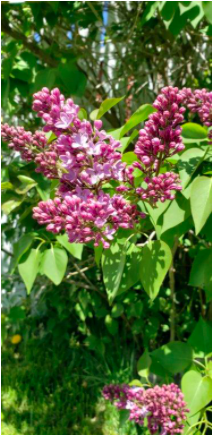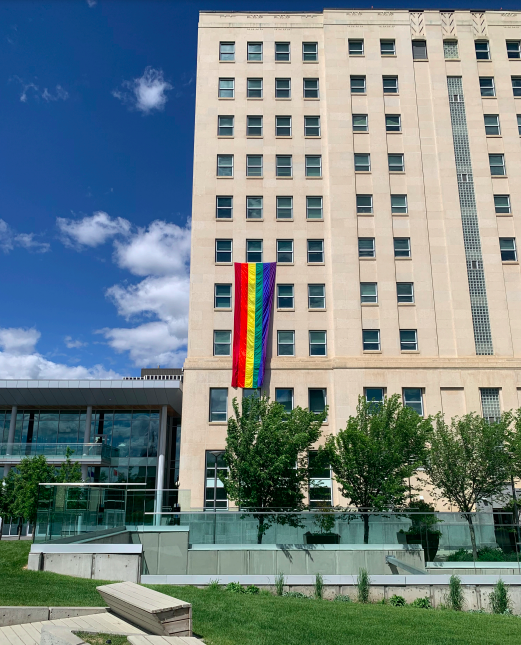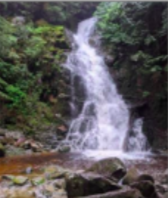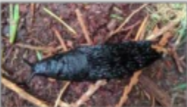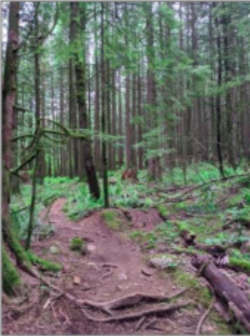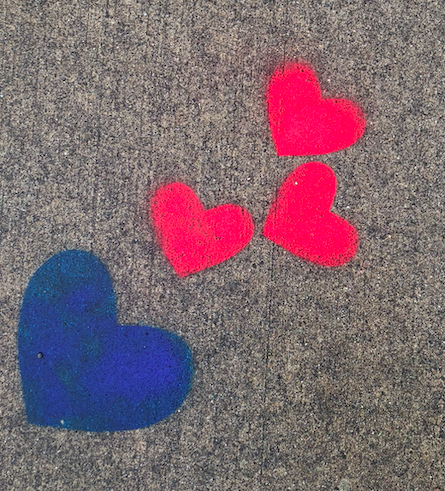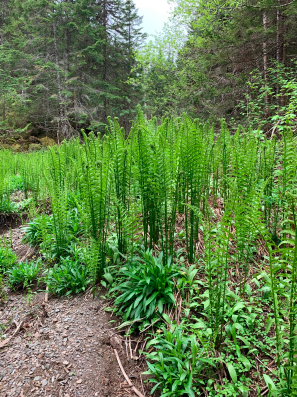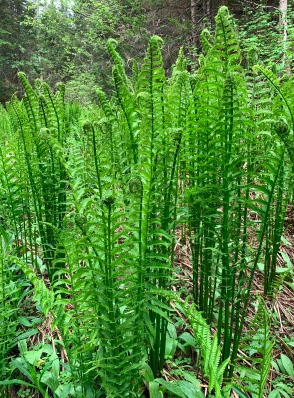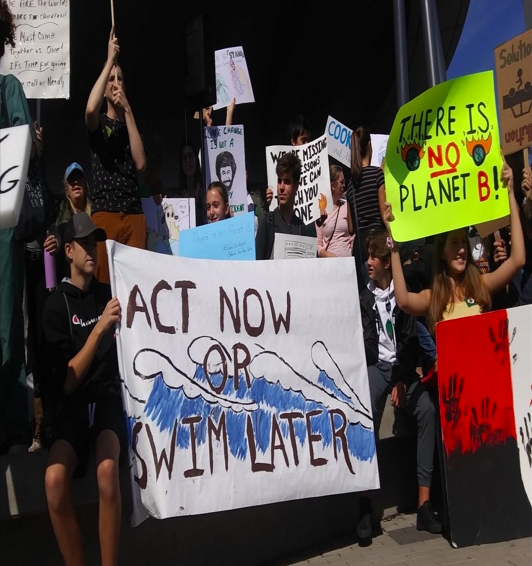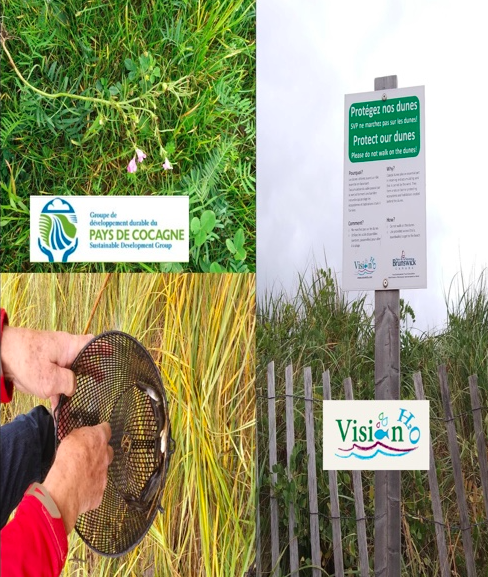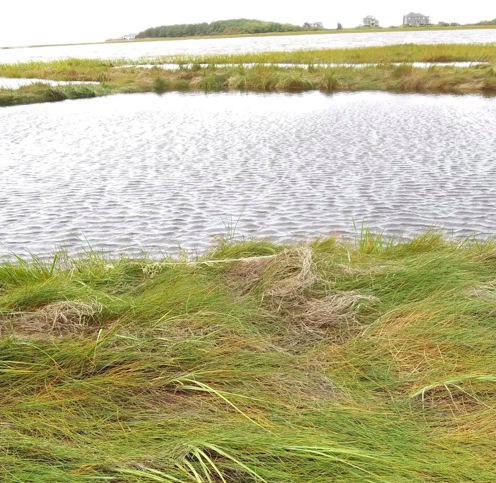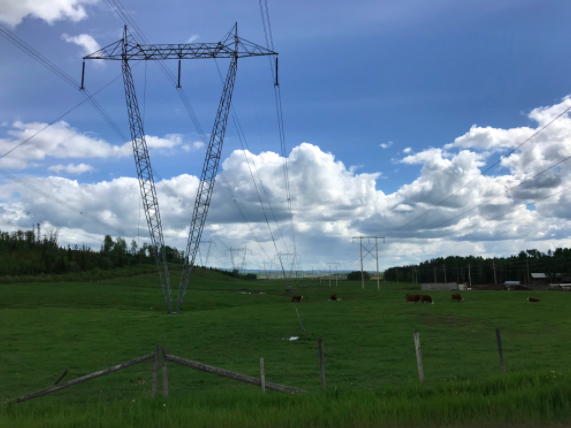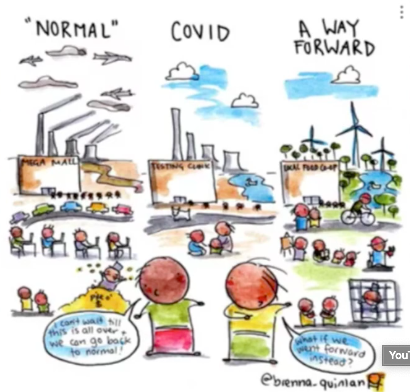arts-based and narrative approaches
The ECHO Network's engagement with Arts-Based Narrative Approaches is supported by collaboration with the
Health Arts Research Centre (HARC).
Arts and narrative based methods such as photovoice, graphic recordings, comic jams, and digital stories provide rich ways to explore E-C-H issues, that can be integrated into face-to-face and virtual exchanges (see for example Martin Harris 2020).
Gislason et al (2018) and de Leeuw et al (2017) explore these ideas further.
Digital story: ech expressions in art
The ECHO Network presents a Digital Story created by Trainees in collaboration with the broader Network to tell the story of Environment, Community, Health (ECH) integration through submissions to an Expressions in Art activity that took place before the 2020 ECHO Network AGM.
To view full-length ECH Expressions in Art activity submissions, please scroll down.
Reflections in Art Activities
full-length ECH Expressions in Art activity submissions
Ravens’ pile I - What I collected on my New Brunswick research trip. An interpretive composite sculpture. Submitted by Dr. Sandra Allison
One Bead – found – Purpose and Life
One String - from our name tags – Identity and Impact as humans
Two Sticks - from my daily walks on campus – Life in the Land
Two Shells - from the Northumberland Strait – Life in the Ocean
Three stones - two From Kouchibouguac NP and One from Northumberland strait - Earth
“I always pick up little trinkets when I travel. Sometimes it catches my eye and I just grab it, other times I throw the object back. Needless to say, when I get home, I have surprising litter at the bottom of my bags. When I pull it all out and finish unpacking, I usually have a little collection of items that I try and make sense of. This is my collection from the Maritimes during my recent research team annual meeting where we met in Moncton, New Brunswick, and surrounding area.”
Funded for five years, four regional cases across Canada are working intersectorally and collaboratively to respond to pressures on rural areas and populations that experience the effects of industry in ways that urban researchers do not see or understand. The research project focuses on the impacts of natural resource development on health in time and space in a cumulative way; how communities experience them. We seek to take notice and respond to the health impacts of natural resource development through intersectoral responses.
Of the intersectoral activities in the cases, within the Northern BC case, the team works very closely with different ministries and industry proponents and communities to minimize the harms of natural resource development and to maximize the benefits for communities and future generations. The First Nations Health Authority case works with Indigenous communities across the province and seeks to empower communities to address their eco-health concerns through relevant ways including research and education. The Alberta case works closely with municipalities to support their watersheds and water sustainability in a resource dependent setting. The New Brunswick case works closely with nonprofit environmental organizations seeking to support communities to respond to various environmental pressures. In May 2019, we convened for our annual meeting in Moncton, New Brunswick and spent three days together, one day on the land learning about the NB environment, and two days in a collaborative meeting space, learning and planning together.
Unique to New Brunswick, the communities and the economy are highly reliant upon a family owned company that is very influential in the province, and elsewhere. The Irving family holds much influence in many industries and media channels, and influence with politicians. The moral distress expressed by many practitioners and community members in the province relates to the inability to “do the right thing” when there is so much private and corporate influence over activities in their province.
Accordingly, reflection is a useful activity to process complex ideas and feelings including moral distress. Within the ECHO project we consider multiple streams and methods of learning in this project, one of which is arts-based learning where we seek to deepen the interaction with our own reflections to further meaning and reflection for others and insight into our own learning and development.
An interpretive composite sculpture was created in an arts-based expression of ongoing dilemmas faced by researchers in the space of health effects related to resource development. This sculpture was composed of Five Elements that were included to represent symbolic components of a system, the bead, the string, the sticks, the shells and the stones, in symbolic proportions.
The Bead – Our Purpose, All Life
The black bead was found. I don’t know where it came from, I do not recognize it and I was pleasantly surprised to find it.
As a “found” bead, it is symbolic of other gifts in our lives, those certain things are picked up along the way and you may not know where it comes from, but you see the value in the gift. The blackness of the bead reminds me of crows and ravens, as does the pile of collected trinkets as a whole, and thus the bead reminds me of life in all things, which is central to the sculpture.
In an expression of my NB ECHO reflections, I see the bead representing that single purpose, north star or constellation of stars that is drawing the project forward; there are many ways to get to the north star, but we strive for the same outcome. The bead is also symbolic of my own internal motivation and purpose of making a difference. It could also represent a set of core values or goals for our research group.
In the piece, the bead, our purpose and all life, is embedded within the inert and living elements of land and sea. The rock has a fine sheen of algae. The stick is symbolic of the life on land, and the snail shell symbolic of life in the ocean. Ultimately, our purpose and all lifeforms are embedded within nature and all nature is intertwined.
The String – Identity and Impact as Humans
The nametags we all wore, carrying our identity, were attached to a string. I recycled the tag but chose to wind the string around the stick somewhat neatly and tightly but became tangled and messy at the end.
The string is symbolic of our identities and impact as humans. The symbolism of neatly winding the string around one of the sticks added a human influence into the collection of pieces of nature and introduced the characteristic of human industry to the piece, albeit maritime. The fact that man is intricately connected to nature in the deepest and tightest way is reflected in the string wrapped wood; we are very tightly wound in connection, almost strangling. And I reflect that our own identities as researchers are also connected, and ordered, and disordered. Strings connect and bind us.
Only one stick is wrapped with string to signify that man must leave some nature alone. To confine and contain man’s industry, seeking to preserve an abundance of life on the land.
We can also see great beauty in the small stick preserved within the shell of abundance.
In the NB project our interdisciplinary team of researchers brings their role and identity to bear in the project through many different ways. And while the string is neatly wound, near the end of the stick, it becomes messy, much like many things do near the end, in the extremes, beyond comfort levels.
The Sticks – Life on Land
These two small, similar sticks were picked up on my daily walk from the dormitory to the conference room. They both lost their bark and were smooth, and short.
In the interpretive piece, the sticks are a reminder of the forest around us, the importance of life on the land, the importance of time and patience, and the interconnectedness of all living things. In our NB travels, the sticks remind us of the ever-present IRVING forestry industry that underpins the economy. The prominence of the forest in both our industry and in our abundance of life is evident in the piece and seeks to demonstrate a balance.
The wrapping of one stick with string is to symbolize the very closely wound connection of man and nature. The tightness of the wrapping also symbolizes the strangling hold that mankind has on nature. Also, the winding of the string symbolizes order, and while nature seems to be disordered, there is amazing order that underpins everything in nature, but can become disordered at the extreme ends.
The unwrapped stick reminds us of the amazing natural beauty, the smoothness without bark and the intricate knot that is left after the loss of a branch, showing beauty after loss, and that even cast away nature, found on a daily walk has deep beauty when you look close.
Further, the symbolism of these sticks being picked up during different walks, but having just the same size and same texture, same feel, reminded me that every day we need to connect with nature, and it will be there, consistently, to heal us.
The Shells – Life in the Ocean
Two shells were found on the beach of the Northumberland Strait. These shells were from a clam and a snail, which both have significance in an ecosystem.
In the NB case, we heard about invasive species impacting fisheries and coastal waters. The importance of fisheries and the changing ecosystem on the economy of the community and their health and wellness. We also heard from local community members in Cocagne about the importance of fisheries.
Stepping back to look at the piece as a whole, you can see that the sandstone foundation holds three items: a stone, a wrapped stick, and a shell of offerings. The half a clam shell holds an abundance of life in the piece. Life on land represented through sticks and stones, and marine life, in the snail shell and the bead signifying life in all things. This abundance of life reminds us to find the balance between the powerful energy of earth and man’s industry and identity.
Of the shells, the snail shell prompts us to think of invasive species, and when contrasted with a clam shell these two shells represent the balance needed for sustainable ecosystems and for species to live in harmony and not overwhelm our systems. Climate change driving many of our ecosystem changes is also represented by the suggestion of invasive species, and algae on the quartz.
The Rocks – Mother Earth
Three types of rock exist, sedimentary, igneous and metamorphic. The collected rocks from a very small geography included, surprisingly, one of each. One rock from Northumberland strait was sandstone, and the other two rocks were from the Kouchibouguac National Park, inland.
A flat piece of sandstone is the foundation of the interpretive piece and is a sedimentary rock that is made from sand under pressure. At the beach, we relish the wonderful feel of sand in your hands, which is the result of the release of grains of sand from sandstone formations, of grinding away at the rock formations over time: a wearing down, contributes to a beautiful outcome, sandy beaches. Meanwhile sandstone is still strong when you aggregate many small pieces together. Both strong and yielding, in one.
The flat dark igneous rock at the back of left of the piece signifies the deep rocky formations of the earth and interfaces with the wound stick, man’s industry. The rock has different layers and strata making obvious the demonstration of powerful intrusion of rock into rock.
The metamorphic rock, quartz or feldspar, sitting in the clamshell, was found in the water, coated with algae, but shaped as a heart (my imagination?), it caught my eye. It shows the connectivity of earth and water life, and the importance of change over time.
In reflection on the NB case, the unintentional inclusion of all three rock types demonstrates the full consideration of earth in the piece, suggesting a sense of place, time, and scale. Having retrieved the three stone types in such proximity to the coast: the sandstone from the beach at Bouctouche, and the igneous and metamorphic rocks from the hike in Kouchibougouac in the inland marsh, demonstrates the regional geologic diversity.
Discussion
This interpretive composite sculpture, composed of small items collected while convening on Environment, Community and Health in New Brunswick is an abstract observation of the pressures and themes that underpin the project. The juxtaposition of varied materials and perspectives, time, space, matter, natural and manmade, healthy, unhealthy, live and inert, embedded and complex relationships are all demonstrative of the tensions in the project.
The concrete, tangible and literal expression of the experience through themes embedded in natural material is contrasted with abstract interpretations and inferred meaning through this sculpture’s presentation. The foundational placement of sandstone illustrates that the foundation we rely upon is mutable and dynamic, stronger when grains are together, yet ultimately yielding.
On one end, the sculpture has a flat stone with intruded rock demonstrating earth’s power energy and resources, overlaid with a tightly wound stick, man’s maritime industry demonstrative of power and influence and (dis)order. These materials are juxtaposed with a shell of abundance. An offering of wood, shell, stone and bead. Of life on land, life in the ocean, mother earth and life in all things. We must balance between the different perspectives and the sculpture offers an expression of the tensions between man and industry, earth and abundance, and our uncertain and changing future/foundation. The inclusion of a snail shell suggests interactions of life forms, both good and bad, and the possibility that invasive species find opportunity in changing climates. The purpose we all share, a sustainable and vibrant future, is nested within the collection of abundance, rather than within the industry of man upon the earth.
Our purpose in life can be sometimes found, like a bead in the bottom of some luggage, and meaning sought in a collection of trinkets. Our identity, values and beliefs guide our imprint and impact, whether power of domination or freedom is the favored mode depends on the individual. Seeing the life around us, in our natural environments, our green spaces and forests remind us of connections that nurture us. Connections we should care about and protect. Sustainability of our precious water resources and the life that lives within the planetary water systems should interest us. The changes in our climate have resonating and quite possibly irreversible effects on our lively water systems including overgrowth by opportunistic invasive species. The earth and its powerful forces and resources are not infinite and replaceable and our role as stewards for future generations is clear but unclaimed.
We need to begin to see ourselves a part of the natural world, not apart from it.
Poem submitted by Dr. Todd Arsenault
‘Three sisters’ garden submitted by Dr. Ben Brisbois
This is my 'three sisters' (corn, beans, squash) garden, planted at my sister and brother-in-law's property in Prince Edward County, which is historically Haudenosaunee and Huron-Wendat territory. I've only got the corn planted so far, in the North-South-East-West arrangement that the internet told me is the customary Haudenosaunee way to honour the four directions and winds associated with them. Despite the proximity of the Tyendinaga Mohawk territory, I am not part of relationships with people (or morethan-human relations) there, and my garden borders on cultural appropriation. It's also a mental/ physical health and wellness strategy for me during a pandemic and busy sessional teaching schedule; an extension of the agro-ecological principles I first encountered in my research with Ecuadorian banana farmers; and, at least in theory, a step towards better relationships and ways of being than those inherent in conventional (racist, patriarchal, anthropocentric, neoliberal capitalist) development models and related/complicit/entangled institutional structures (e.g. universities, government departments, health units). Yes, all that - or else just 12 heaps of dirt, lots of weeds and 48 corn seeds, most of which are surviving so far.
“Public Parks”. Submitted by Jordan Brubacher.
Public parks do a great job of integrating environment, community and health. Even the most obscure parks in my neighbourhood have become popular gathering places in these days of physical distancing. I can't help but wonder if, once the virus has receded, people will go back to doing whatever it was they did before. Or, will they continue to build community in these outdoor spaces that had eluded them for so many years.
The example ECH activity created and shared to the team by Dr. Holly Clermont
Foxglove (Digitalis purpurea). Submitted by Dr. Holly Clermont
In full bloom along the paths where I like to run is Foxglove (Digitalis purpurea), a naturalized plant with European origins. I stop to admire its striking beauty and its tall, robust stature, and to gently touch its velvety-soft flowers. Glycosides in foxgloves are used to make prescription heart medications. While it is indeed toxic, poisonings from plants in gardens and natural spaces are rare. When they do happen, however, they are often deadly. There is evidence that as early as the 1700s, Indigenous people in North America recognized and correctly calculated its therapeutic value as a cardiac stimulant. Pondering how they might have come to know this, I see a sign I hadn’t noticed on any other day - CAUTION: Toxic Giant Hogweed. Native to Asia, Heracleum mantegazzianum derives its name from Hercules, son of Zeus. It too is tall and robust, and notoriously invasive. Its clear sap contains phytotoxic compounds called furocoumarins/ furanocoumarins, which on contact with skin can cause blisters and burns so severe it can land you in the hospital. I contemplate whether someday, someone will find a practical use for hogweed and it will be perceived in a better light. Seeing these plants juxtaposed - both introduced and both toxic - made me think of the challenges the ECHO Network will face as it contemplates indicators. As the foxglove so gracefully shows us, indicators may be both assets and deficits. It all depends on exposures, sensitivities, thresholds, and how much you value the silky magenta flowers that signal the beginning of summer.
“Messages for Our Youth” quilt from the Health and Climate Change in Fort William First Nation project. Submitted by Dr. Lindsay Galway and Elder Elizabeth Esquega.
“The quilt represents FWFN band and community member perspectives on climate change. It conveys both symbols and messages to our children and grandchildren about what climate change means to us. Just as a picture is worth a thousand words, the quilt has captured, and woven together, the essence of urgency, resiliency and hope. The title of the quilt is Embraced by Father Sky as the color blue borders alongside other reflections of the four traditional colors of the medicine wheel. This quilt is bound together with messages to future generations entwined with the recognition of resiliency that each individual brought forward in their wisdom.”
For a description of each piece of the quilt: Health and Climate Change in Fort William First Nation project
Hiking Trails. Submitted by Louisa Hadley.
Submitted by Meg Labron.
Submitted by Saadia Hara.
Poem. Submitted by Dr. Margot Parkes.
The World According to ECHO - Glimpses of environment, community, and health connections in the COVID era. Submitted by Sarah Skinner.
Last weekend I went for a bike ride with my partner on some back roads east of Prince George bracket approximate map attached bracket. Once we left the highway, we rode through idyllic Countryside with very few cars. Then we passed some massive power lines, which likely bring electricity from the W.A.C. Bennett Dam some 350 km north of here. A little while later we passed by a sign for an underground gas line, which likely bring Natural Gas from the northeastern region of the province. Both the power lines and gas line signs are ubiquitous across northern BC – I hardly noticed them unless I stop to look around.
I started thinking about how the environment-community-health nexus is about energy: where it comes from, what we do to the Earth and to each other to get it, what we put it into, how that affects us. There's energy as a source of electricity, of locomotion, and of production. There's energy sources that are commoditized and traded and fetishized; a driver of the global economy, which are also entangled and climate change and neo-colonial extractivism. And then there's the energy of people themselves, working together for a common Vision or goal as a community. As we returned to Highway 16 – “The Highway of Tears” – I was thinking about where I put my energy. At the very least, a bike ride was a good thing.
Submitted by: Dr. Marieka Sax
Submitted by Dr. Tim Takaro.
The flow of our progress, sometimes we're floating on a placid part of the river, sometimes we're boldly going into treacherous waters, sending our vanguard kayaker ahead.
Virtual spring activity submissions
Submitted by Dr. Dawn Hoogeveen.
Submitted by Dr. Celine Surette.
This is the Pride flag being flown outside of the Alberta NDP offices in Edmonton – June is LGBTQ2S+ Pride Month, so I’d like to acknowledge the many ways our queer and trans siblings make our world better :). Submitted by Nick Yarmey.
Lilacs in May. Submitted by Dr. Diana Kutzner



